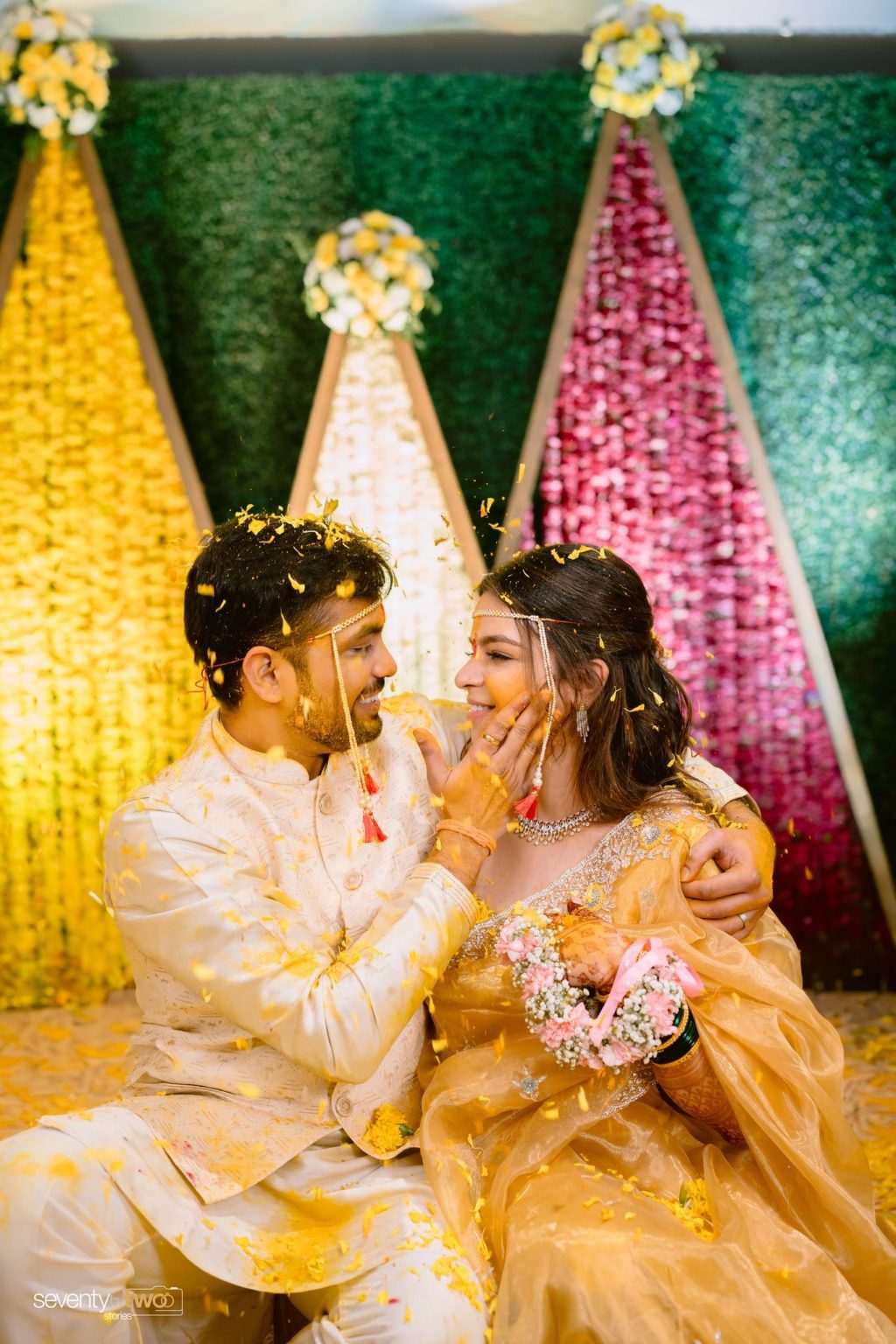Vibrant, elaborate and grand are just some of the words that come to mind when thinking of an Indian wedding. India is an immensely diverse country, meaning wedding traditions can vary greatly between regions, states and even families based on culture and religion. I recently attended a Marathi Hindu wedding in Maharashtra for my cousin. While aspects echoed common Indian traditions like the Haldi and Mehndi ceremonies, there were also many special touches stemming from my family’s geographic and religious background. For Marathi Hindus, a wedding represents not just the union of two souls but the bringing together of two families, homes, traditions, and rich cultural histories. The celebrations can last upwards of a week and involve many meaningful rites and rituals for the bride, groom and their loved ones.
One unique pre-wedding tradition was that the bride rode a white horse from her ancestral home to the temple in her ancestral village. This ritual is unique to women in the bride’s village, and families celebrate it with varying scales of fanfare. Some make a simple pilgrimage on foot while others make it a proper event; the bride’s family chose the latter route. They hired a pristine white horse and a DJ, inviting masses of villagers to join the procession. It was in no way a pedestrian affair but instead a spectacle akin to a dance number unfolding down small village streets. Decorated gloriously in a red nauvari saree flowing to her ankles, the bride sat poised atop the horse. As the music swelled, she raised her arms to join in the elated cheers and dance as their dancing procession set off towards the temple. By the time they reached the temple to offer blessings, the revelry had lasted for hours. Radiant in the company of her family, the bride partook in the procession precisely as those before her once did.
The night before the wedding brought even more traditions and ceremonies. In a Marathi wedding, mehndi is much more than a beautifying body art – it signifies luck and blessings infused into the bride as she prepares to start a new chapter. The bride’s and the groom’s families gathered in two different rooms as the ceremony began. The bride sat with a glow as skilled mehndi artists began tracing auspicious designs across her palms, arms and feet using an intricately-tipped henna cone. The room was abuzz with chatter and laughter as friends and family gathered to have mehndi designs drawn onto their arms, cheerfully gossiping about whether the groom would be able to spot the hidden initials woven into the floral designs. The mehendi ceremonies of the past were often exclusive to brides and female relatives, but modern adaptations have made it more common for both genders to get mehndi designs. Today, it is increasingly commonplace for the groom and his close male cousins and friends to be adorned in henna finery beside the bride-to-be, albeit much smaller and less intricate designs. The groom convinced all of his male friends, cousins and even uncles to get a small design on their palms. As the mehndi dried on our hands, we prepared for the next day, the intricate patterns and hues of color: a symbol of the luck and happiness the bride and groom would carry into their marriage.
The day of the wedding brought even more fanfare and tradition. The vibrant haldi ceremony is most popular in North Indian or Hindu weddings. Typically, people now choose to use store-bought turmeric, the main ingredient of the halad used at the haldi ceremony, as opposed to the tradition of making it. My family, however, chose to partake in the ceremony of making turmeric in our village. Days before the wedding, the elder women in the village and the women of my family gathered to hand-make the revered turmeric paste from scratch. Fresh turmeric rhizomes were washed in an iron kadhai, a traditional Indian cooking pot, over an open flame before being dried and then ground by hand into a fine golden powder. The making of the turmeric was a celebration of itself, accompanying the dance performances and music into the late hours of the night. On the radiant haldi morning itself, water was mixed into the turmeric to create the paste-like substance known as halad. The start of the haldi ceremony was marked by the entrance of the bride with her close cousins and friends into the banquet hall. The entrance was accompanied by a Bollywood song and a dance number. Upon the entrance of the bride, my cousins, close friends of the groom and I entered the hall with our own dance number. As the bride and groom took their places on the stage, those in attendance began to form a line to apply the haldi to the bride and groom. The haldi ceremony represents a life of prosperity and happiness for the couple. The application of the paste to the hands, feet and faces is meant to protect the two as they are ushered into a new stage of their lives.
Indian weddings beautifully fuse families, cultures, generations and traditions into one joyous celebration of community. Through customs like haldi ceremonies, mehendi blessings or lively dances, love for the couple is evident. Through my experience, I gained clarity on the purpose of these traditions. They manifest an entire community’s blessings to shower the newlyweds with not only luck but also the warmth of togetherness and community as they step into their next exciting phase of life. By partaking in these traditions, I witnessed the unique way through which Indian weddings intertwine lives and families through a spiritual start filled with support that uplifts the couple every step of their marriage.
